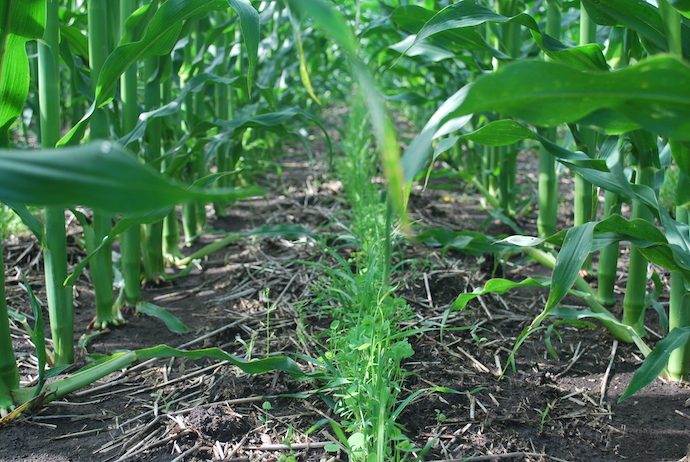By: Steve Groff
“Every day counts” is usually associated with planting season in the spring. Perfect weather seldom occurs, and when it’s time to plant you need to be ready to roll.
I often use the phrase “Treat your cover crops like your cash crops” in order to help farmers adopt the proper mindset for the effective use of cover crops. This could not apply more to the timely planting of cover crops in the fall. To do this, strategic planning needs to be prioritized. You need to follow the cash crop harvester as closely as possible. One day of cover crop growth in September is as valuable as at least a week of growth in October.
Plan for Seeding Cover Crops
Just as cash crop seeds are ordered weeks or even months in advance, a cover crop plan needs to be thought through so you can get the seeds you want. Astute farmers will strategically set themselves up to get a jump on cover crop planting by using shorter season cash crops. Done on 10% or so of your acres might allow you to get cover crops planted up to three weeks sooner.
Order the Seed
As we head into fall, a conversation with your cover crop seed dealer is warranted. Laying out your expectations of what you want to accomplish with cover crops will help identify which species will best meet the desired goals.
Specific types of cover crops may be higher priced or in short supply, so substitutions might be needed. Some seed companies offer early order or prepaid discounts, which can really help make cover crops pay.
If the cash crops are maturing faster than usual, make sure your seeds are picked up or delivered on time. Also, an early maturing cash crop may trigger cover crop seed shortages in the region — another reason to have your seeds pre-ordered.
That being said, sometimes the season is later and it may merit a switch in species. If you are uncertain that you can even plant a cover crop due to delayed harvest, contact your seed salesperson. They appreciate knowing how to plan themselves and there may be a use for that seed elsewhere. Having a good working relationship with your cover crop salesperson is as important as it is with your cash crop seed dealer.
Prepare the Planters
Most farmers have their planters ready to go weeks in advance for the spring cash crop planting season. The same preparedness needs to be applied to the late summer/fall cover crop planting. It’s not really a lot of work for drills, but more farmers are using their precision planters to seed cover crops. Since these planters have better seed to soil contact, this may result in lower seeding costs. It’s also an opportunity to get more use out of a planter that may be only used 10-15 days out of the year for spring planting.
One of the aspects that makes these planters appealing is that some aftermarket companies are now making seed discs to accommodate many cover crop species and mixes, even on vacuum style meters.
Line Up Tractor Driver
A major challenge in planting behind the combine is finding available manpower to run another tractor to plant the cover crop. Sometimes there is a retired neighbor farmer who would enjoy some tractor work, or a promising young lad whose time has come to get behind the wheel. Once cover crops are experienced to be beneficial to any given farm, getting someone to fill this position becomes a priority.
Follow the Harvester
Just like farmers who plant double crop soybeans follow the combine harvesting small grains, the same urgency will pay dividends in making every day count for the cover crop. How close you get to the harvester depends on how well prepared you are beforehand.
Reap the Benefits
The benefits of using cover crops are well known. Following the harvester or combine will maximize what cover crops offer. Careful planning and execution will be required, resulting in reaping a reward that is well worth the effort.
Treat your cover crops like your cash crops. Every day holds potential payback.





Post a comment
Report Abusive Comment